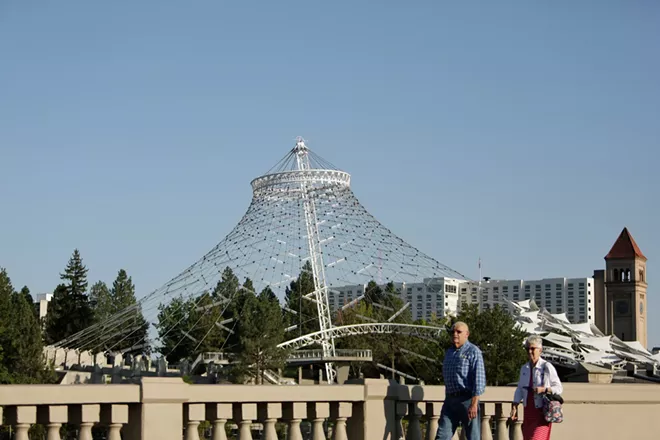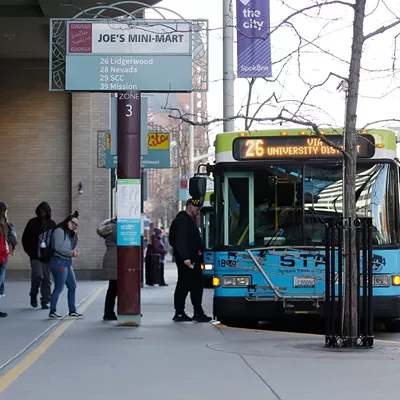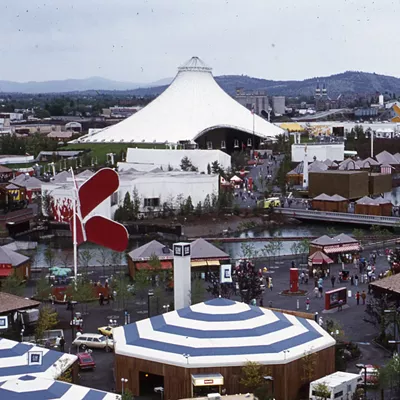
We have both had the privilege to live and work in the Spokane community for much of our professional careers, including many years at City Hall. When Inlander Publisher Ted McGregor asked if we would be interested in teaming up for a few columns, we immediately said yes. As anyone who knows us will attest, we have never been shy about sharing our opinions. We have also never been shy about our passion for Spokane.
One of the things we have learned through our long careers in public service is that building public partnerships is incredibly hard. Government by nature is a siloed world, and the headwinds of culture, law, finance and politics are constantly blowing against you.
However, the more important lesson we have learned in our years of public service is that collaboration and partnerships are the only way that really big things get accomplished in our community.
In fact, many of this community's greatest assets are here because of very innovative and lasting public partnerships and collaborations. As we approach the 50th anniversary of Expo '74 (the granddaddy of all our partnerships), it's appropriate to reflect a bit on some of these big achievements:
The Spokane public parks system; Spokane International Airport; Expo '74 and Riverfront Park; the Centennial Trail; the Waste to Energy Plant; the University District and medical schools; River Park Square; Kendall Yards; the Spokane River Integrated Clean Water Plan; the Convention Center Expansion; the downtown Podium and stadium projects; the West Plains Public Development Authority that drew Amazon; and various community partnerships for new public schools, libraries and parks.
A separate column could be written on the challenges, inside stories and lessons learned for each of these projects. But suffice it to say, there wasn't a single project on this list that didn't have to overcome controversy, legal obstacles, do-overs and political posturing.
Let's examine some of those obstacles.
It starts with CULTURE. Government culture is generally built around a zero-risk and status-quo philosophy. For the employees (and even leaders), there is little reward for coming up with innovative initiatives and/or cutting costs. Conversely, there is great public consequence to deviating from the status quo and getting it wrong. When there is little reward for taking a risk and succeeding, but great consequences for taking a risk and failing, the zero-risk philosophy of status quo becomes culturally ingrained. In baseball terms, it reinforces a behavior where it's better to be zero-for-zero than three-for-four.
The next obstacle is THE LAW AND MONEY. Given the zero-risk mentality described above, over time the laws and finances in local government have evolved around preventing abuse of public funds. The outcome has been the creation of what is termed "fund accounting" and of numerous laws preventing merging of funds. Every dollar must be earmarked and pigeonholed for only one specific purpose to protect the citizens from government abuse. Unfortunately, while perhaps well intentioned, what this is really preventing is innovation and cross-collaboration in local government. Not only does this stifle partnerships and collaboration across government entities, it creates impenetrable silos within each government entity, where the allegiance is to the silo and not to the public good.
The third obstacle is simply POLITICS. The word politics is derived from the act of making policy. Policymaking is the lifeblood of all local governments. But this is where the distinction between developing policy and developing strategy is so critical.
Policy development is generally a left-to-right process, where you start with a concern or problem and work through a public process to a solution (Process Drives Outcome). Quite often this involves citizen groups, committees and stakeholders who work through a process of compromise and consensus to recommend an outcome.
Strategy development on the other hand is a right-to-left process, where you start with the desired outcome/strategy and then develop a process to achieve that end result (Outcome Drives Process). This does not eliminate the necessity for good public engagement, but the engagement comes after the proposed solution, not before.
The two processes are truly mirror opposites, but in local governance they are too often perceived as being the same. The problem here is that good strategies are almost never developed through a policy approach. Good strategy is built on analysis, innovative thinking and assessment of risk/reward, which rarely comes from a group-think process. And good strategies are the lifeblood of successful partnerships.
The final obstacles are simply GREED AND POWER. Partnerships work until someone gets greedy. In the public sector, greed is usually not about money but about who gets credit. The same goes for power. True partnerships are not about consolidating power but about multiplying power: 2 x 2 = 6.
We have defined what we see as the primary obstacles to collaboration and innovation in local government. The last couple years of isolation, remote interactions and divisive discourse have only added to the degree of difficulty. Yet time and time again, Spokane has demonstrated the will and persistence to push through all these obstacles to get to the finish line.
In our next column we will offer some insights into the secret sauce that Spokane has discovered to overcome these obstacles in the past, and we'll touch on some opportunities to apply it going forward. Please join us! ♦
Gavin Cooley was the City of Spokane's Chief Financial Officer for 17 years, serving five different mayors. He currently is working with the city on projects including investments and the Spokane River Trail System. Rick Romero is the former Utilities Director and Director of Strategic Planning for the City of Spokane. He worked on a variety of projects, including the renovation of Riverfront Park, the Podium and the downtown Spokane football stadium. Prior to that he worked at Eastern Washington University as Associate Vice President of Business Services.


















